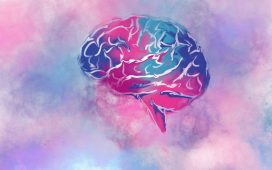Higher IL-6 at baseline linked to lower end-of-treatment Montgomery-Asberg Depression Rating Scale scores
TUESDAY, March 13, 2018 (HealthDay News) — For patients with major depressive disorder, interleukin-6 (IL-6) may predict benefit from electroconvulsive therapy (ECT), according to a study published recently in the Journal of Clinical Psychiatry.
Jennifer L. Kruse, M.D., from the University of California at Los Angeles, and colleagues examined whether markers of inflammation predicted response to ECT in patients with treatment-resistant depression. Levels of C-reactive protein (CRP), IL-6, IL-8, and tumor necrosis factor α, and severity of depression symptoms (Montgomery-Asberg Depression Rating Scale [MADRS]) were assessed before ECT treatment, after the second ECT session, and at completion of the index treatment series in 29 patients.
The researchers found that there was a correlation for higher IL-6 levels at baseline, but not other inflammatory markers or clinical variables, with lower end-of-treatment MADRS score (P = 0.01). IL-6 remained a significant predictor of end-of treatment MADRS for women (P = 0.02), but not men (P = 0.1), when stratified by sex; CRP was a significant predictor for women (P = 0.04), but not men (P = 0.66). There were increases in CRP and IL-6 from baseline to the second ECT session (P < 0.01); levels returned to baseline at the end of treatment. These changes were not associated with MADRS score over the course of ECT.
“Levels of IL-6 prior to ECT treatment may be useful in identifying those depressed patients most likely to benefit from ECT treatment,” the authors write.
Abstract/Full Text (subscription or payment may be required)
Copyright © 2018 HealthDay. All rights reserved.








